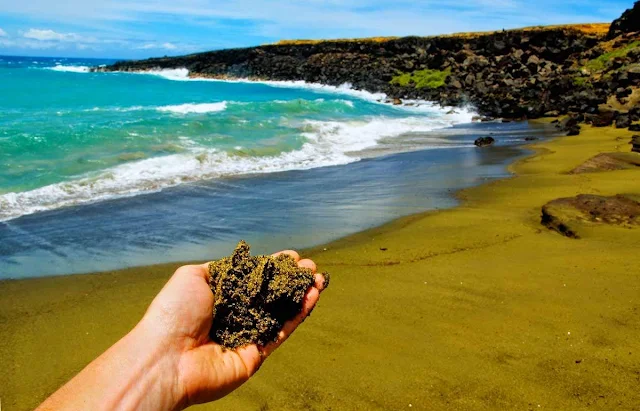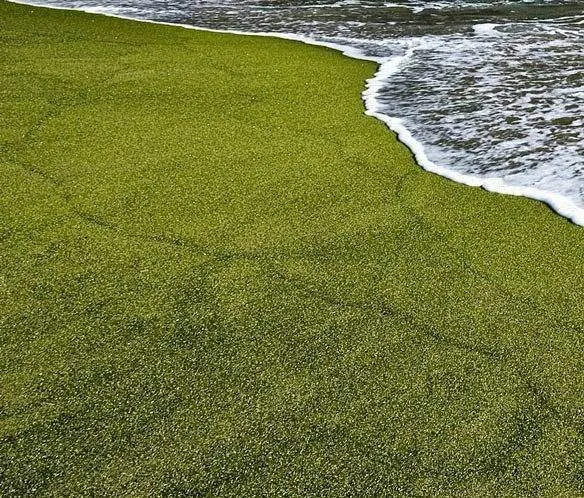Papakōlea Beach: The Green Sand Beach
The Green Sand Beach is known for its stunning green sand, which is made up of olivine crystals that have eroded from the surrounding volcanic cone. The olivine is a green mineral that is often called "Hawaiian diamonds" because of its sparkly appearance.
The green sand beach located near South Point, in the Kaʻū district of the island of Hawaiʻi. One of only four green sand beaches in the world, the others being Talofofo Beach, Guam, Punta Cormorant on Floreana Island in the Galapagos Islands, and Hornindalsvatnet, Norway.
It gets its distinctive coloring from the mineral olivine, found in the enclosing cinder cone.
Papakōlea Beach is located in a bay half circled by Puʻu Mahana, a cinder cone formed over 49,000 years ago and associated with the southwest rift of Mauna Loa. Since its last eruption, the cinder cone has partially collapsed and been partially eroded by the ocean. The beach is sometimes named after the cinder cone, and sometimes after the area of land called Papakōlea, which comes from papa kōlea, which means plover flats in the Hawaiian language. Papakōlea is the area near the crater where the Pacific Golden Plover (Pluvialis fulva) are sometimes seen in winter.
 |
| The Green Sand Beach. |
The beach's striking green sand is formed from olivine, a semi-precious gemstone and mineral rich in iron and magnesium. Olivine crystals are abundant in Hawaiian basalt and are among the first crystals to form as magma cools. Over time, weathering and erosion from the ocean waves break down the volcanic rock, leaving behind the olivine crystals that now grace the beach.
The cinder cone is rich in olivine, a silicate mineral containing iron and magnesium, also known as peridot when of gem quality. Olivine is a common mineral component of Hawaiian lavas and one of the first crystals to form as magma cools.
Olivine is locally known as "Hawaiian Diamond" and is notably found in Oʻahu's famous Diamond Head landmark. The source of the green coloration of the beach sands is due to the olivine crystals which are winnowed from the eroding headland by the action of the sea.
Olivine, being denser and tougher than the ash fragments, glass and black pyroxene of the rest of the rocks and lava flows, tends to accumulate on the beach whereas the usual volcanic sand is swept out to sea. Although these crystals are eventually washed away as well, the constant erosion of the cinder cone ensures a steady supply of sand for the foreseeable future—eventually, however, the supply will run out and the beach will look like any other
 |
| Green Sand |
Things to do: Visitors to Papakōlea Beach can enjoy swimming, sunbathing, and exploring the tide pools. The beach is also a great place to hike and picnic. However, it is important to be aware that the beach is quite remote and can only be accessed by a moderately challenging hike. It is also important to be respectful of the culture and environment, as the beach is a sacred place for Native Hawaiians.
How to get there: The Green Sand Beach is located about a 2-hour drive from Kona. The last part of the road is not paved, so a four-wheel drive vehicle is recommended. There is a parking lot at the trailhead, and from there it is a 1.5-mile hike to the beach.
The Green Sand Beach Photos
With its unique green sand and remote location, Papakolea Beach is a truly special place that is worth visiting if you're ever on the Big Island of Hawaii. Just be sure to be prepared and respectful of the culture and environment.




%20(1).webp)






